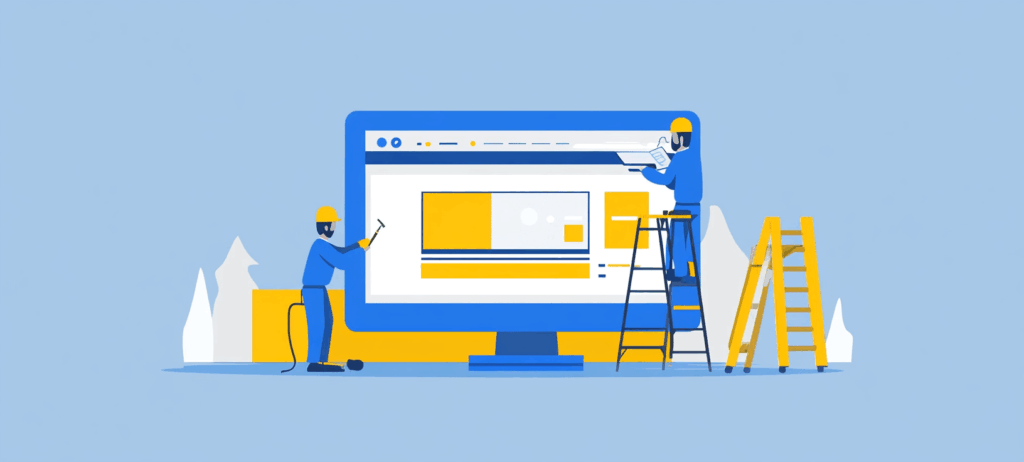-
 Published: Oct 6, 2025
Published: Oct 6, 2025
-
 10 min. read
10 min. read
-
Summarize in ChatGPT
-
 Sarah Berry
Sarah Berry Lead Web Marketing Consultant
Lead Web Marketing Consultant
- Sarah Berry is a Lead Web Marketing Consultant at one of the largest digital marketing agencies in the USA — WebFX. With more than 10,000 hours of experience, she offers practical insights and strategies to grow your digital revenue. Her work has been cited by Michigan State University, Business Insider, and Ars Technica. When she isn’t polishing her Time Magazine Person of the Year Award, she’s spending time with her flock of ducks.
Table of Contents
- Why is ongoing SEO maintenance necessarry?
- SEO isn’t a once-and-done strategy
- Rankings in search results aren't permanent
- Search engine algorithms aren’t static
- Competitors aren’t ignoring SEO maintenance
- How do I maintain my SEO (and rankings)?Your SEO maintenance checklist
- 1. Monitor website performance
- 2. Fix broken and redirected links
- 3. Maintain local listings
- 4. Re-optimize existing content
- 5. Off-page authority management
- Check SEO maintenance off your to-do list today
- FAQs about SEO maintenance
- What is SEO maintenance?
- Why is ongoing SEO maintenance needed?
- How do I maintain my SEO (and rankings)?
- How often should I monitor website performance?
- How frequently should I fix broken or redirected links?
- How often should I maintain local listings?
- How often should I re-optimize existing content?
- Why is SEO maintenance necessary? SEO isn’t a once-and-done strategy — it requires continuous maintenance because search engine algorithms constantly update, rankings aren’t permanent, and competitors actively work to outrank you, meaning neglecting maintenance will cause your traffic and rankings to decline.
- How often should you monitor website performance? Website performance should be monitored weekly, monthly, and quarterly using tools like Google Analytics and Google Search Console to track rankings, click-through rates, pageviews, and user behavior metrics that reveal which pages need optimization or repairs.
- What happens if you don’t fix broken links? Broken links (404 errors) create dead ends for users and search engine crawlers, causing visitors to leave your site for competitors and negatively impacting your search rankings — tools like Screaming Frog can identify these issues monthly so you can repair them.
- Why should local businesses maintain their listings? Local listing maintenance ensures your business name, address, and phone number stay accurate across platforms like Google Maps, which is critical since people find local businesses through local SEO 3-packs that appear before organic search results.
- How does re-optimizing content improve rankings? Monthly content re-optimization involves updating accuracy, aligning with current search intent, and targeting relevant keywords to prevent evergreen content from declining in rankings over time — tracking tools like Google Search Console and Ahrefs help identify which pages need updates.
You know that search engine optimization (SEO) matters. After all, more than 90% of online experiences begin with a search engine, with the top-ranking website receiving 33% of all search traffic. You need that number one spot to succeed, and routine SEO maintenance can help you earn it and keep it.
SEO maintenance includes weekly, monthly, and quarterly tasks that range from updating content to fixing broken site links. Keep reading, because this SEO maintenance guide covers everything you need to know (and do) to maintain and even improve your SEO rankings.
Why is ongoing SEO maintenance necessary?
Watch our video below and keep reading for the answer!
Ongoing SEO maintenance matters for a few reasons, including:
SEO isn’t a once-and-done strategy
While some digital marketing strategies may serve a short-term role, like pay-per-click (PPC) advertising, others, like SEO, operate as a long-term strategy and require continuous maintenance to deliver the best return on investment (ROI).
In fact, your SEO strategy won’t start driving results until after three to six months and will stop being consistent after a few months if you make no changes or updates. Constant algorithm changes and user behavioral shifts are part of the reason you can not set-it-and-leave-it with SEO.
Without SEO maintenance, you’ll see the minimum, if any returns, from your efforts. Depending on the size of your website, your ongoing SEO maintenance plan may only require a few hours of your time each month.
Rankings in search results aren’t permanent
When you earn a first-page or number-one ranking, you can expect high-fives and cheers. A lot of companies forget, however, that rankings aren’t permanent. Just like your business can take a number-one ranking from a competitor, someone else can take yours.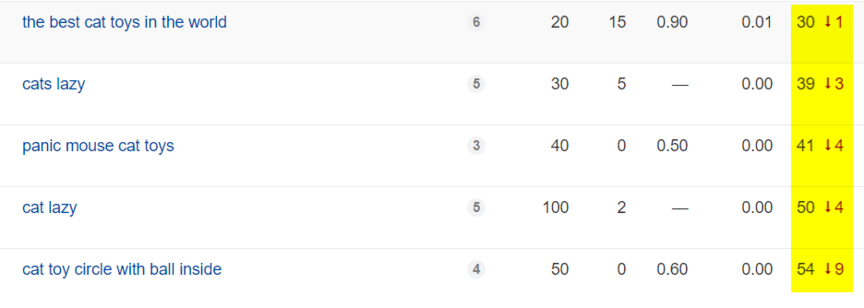 You will always need to work to maintain your rankings, which is where SEO maintenance becomes useful. With SEO maintenance as a core part of your SEO strategy, you can keep up with changing search trends and behaviors while also pushing back against competitors.
You will always need to work to maintain your rankings, which is where SEO maintenance becomes useful. With SEO maintenance as a core part of your SEO strategy, you can keep up with changing search trends and behaviors while also pushing back against competitors.
If you don’t maintain your content, though, you can expect content decay, lose your rankings, and fall to page two and beyond. For reference, the second page of search results only gets about 6% of clicks.
Search engine algorithms aren’t static
The algorithms that power search engines and rankings undergo continuous updates. Google, for example, launches thousands of algorithm improvements each year. These updates can range from small tweaks to massive updates that influence your SEO strategy. 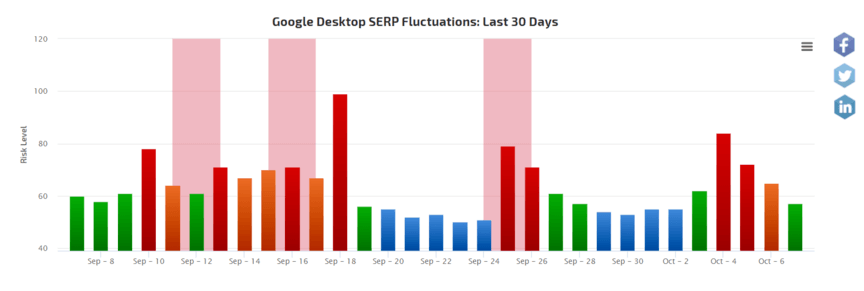
A good example of a significant algorithm update is Google’s switch to a mobile-first index, which motivated many businesses to build responsive and mobile-friendly sites.
If you don’t prioritize SEO maintenance, you leave old pages on your website vulnerable to updates. An older slow page, for example, may decrease in rankings because of its speed, which Google now uses as a ranking factor. That decrease can hurt your website traffic, as well as lead generation efforts and sales numbers.
Competitors aren’t ignoring SEO maintenance
In the past, businesses could skip SEO maintenance and see little change when it came to their rankings. That’s changed, however. With 49% of small businesses already investing in SEO and another 31% planning to, it forces more companies to either adopt SEO maintenance or sacrifice traffic, sales, and revenue.
If your business wants to remain competitive, as well as prominent in search results, you need to maintain your site and strategy. Otherwise, you’re investing in a plan that will only produce short-term, versus long-term, gains.
How do I maintain my SEO (and rankings)? Your SEO maintenance checklist
SEO maintenance involves juggling different tasks to keep everything running seamlessly in the background. Doing it all manually is taxing and time consuming, which makes automation and scheduling tools, like Google Analytics and LocalFX your best friend.
SEO automation tools ensure faster fixes, fewer overlooked issues and steadier SEO performance, so nothing falls through the cracks. Here are some ways you can leverage SEO automation tools to keep your rankings consistently high:
1. Monitor website performance
Frequency: Weekly, monthly, and quarterly
Tools: Google Analytics, Google Search Console
Tracking your website and pages’ performance is essential in SEO for digital marketing.

You want to monitor your rankings, click-through rate (CTR), and page views. These digital marketing metrics can help your team spot pages that need your help. For example, a gradual CTR decline could indicate that your title tag doesn’t attract users or tap into their needs.
In Google Search Console, you can look at critical data points for pages, like queries, impressions, clicks, and CTR. Meanwhile, in Google Analytics, you can get insight into user behavior with the following data points:
- Pageviews
- Time on page
- Bounce rate
Use these SEO monitoring tools to track your website’s performance, produce SEO reports, and find pages that need SEO maintenance.
2. Fix broken and redirected links
Frequency: Monthly
Tools: Screaming Frog
For search engines like Google, as well as users, broken links (also known as 404s) lead users and search engine crawlers to a dead-end. So, when users click on your website from search results and arrive on a 404 page, they will turn around and find another site from the search results.

That action, also known as pogo-sticking, impacts your ranking in search results. Your SEO maintenance plan, however, can find and fix broken links. With a tool like Screaming Frog (the free version can crawl up to 500 URLs), you can find broken links fast.
Depending on your website, you may need HTML experience or the help of a developer to repair broken links on your site. In addition to finding 404 errors, Screaming Frog can also uncover redirected links (also known as 301s), which generally go unnoticed by users.
Search engines like Google, however, do notice and don’t care for excessive redirects. That’s why it’s worth fixing 301 errors by updating the URL to the new one. For the best results with this SEO maintenance step, fix your 404 and 301 errors every month.
3. Maintain local listings
Frequency: Monthly
Tools: LocalFX, Google Sheets For businesses
When operating locally, maintaining local listings is essential. That’s because people generally find your business via local listings. If someone searches, “sandwich shop near me,” on Google, for example, they will encounter local listings (also known as a local SEO 3-pack) before organic search results.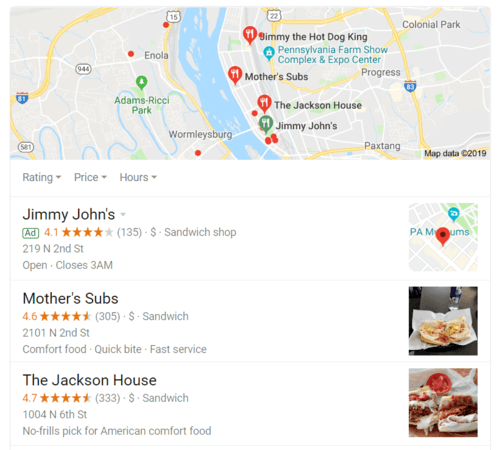
Local listing maintenance starts with keeping your company’s name, address, and phone number up to date. 
Depending on your number of listings, this ongoing SEO maintenance task can take some time if done manually. If you decide to invest in a paid local listing management tool, like LocalFX, you can update all your local listings instantly. LocalFX can also monitor, manage, and respond to reviews across platforms.
Instant updates to all your listings, from Google Maps to Apple Maps, can save a tremendous amount of time.
4. Re-optimize existing content
Frequency: Monthly
Tools: Google Search Console, Google Docs, Keywordtool.io
While your business may create evergreen content, that doesn’t mean it’s immune. Without updates from your team, evergreen content can decrease in rankings over time. You can prevent that though with SEO maintenance. When it comes to ongoing SEO maintenance for content, you focus on three factors:
- Content accuracy: Is your content still correct and up to date?
- Search intent alignment: Does your page align with the search intent today?
- Keyword relevancy: Do searchers still use your targeted keyword?
In some cases, you may find that pages match the search intent and provide accurate content but target outdated keywords. Or, that your content, while accurate, doesn’t meet the search intent for your targeted keywords. Either way, your team will need to evaluate pages across your site and make the appropriate changes. You can find pages for re-optimization with Google Search Console. For example, you may look for pages with a steady decrease in impressions and clicks. Or, you may use a paid tool, like Ahrefs, to track keyword rankings for pages. ![]() Once you determine which pages require updates, you can outline your changes. Depending on your updates, you may need to do some additional research. For example, if you’re switching your core keyword, you will need to find a relevant alternative. You could use Google or a free tool like Keyword Tool.
Once you determine which pages require updates, you can outline your changes. Depending on your updates, you may need to do some additional research. For example, if you’re switching your core keyword, you will need to find a relevant alternative. You could use Google or a free tool like Keyword Tool. 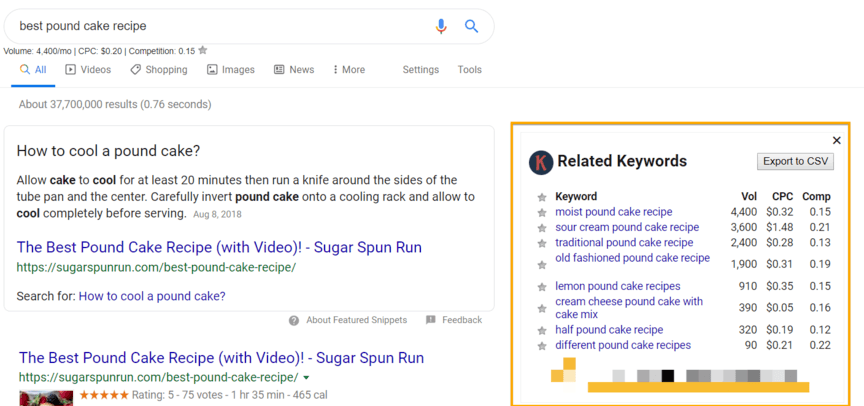 For the best results, log your changes and store a backup of your original page. With this initial SEO maintenance checklist, your business can start the process of maintaining your SEO strategy and improving your rankings. Remember, though, that your team will need to commit to ongoing SEO maintenance. If you don’t, you won’t see the impressive long-term results that SEO offers.
For the best results, log your changes and store a backup of your original page. With this initial SEO maintenance checklist, your business can start the process of maintaining your SEO strategy and improving your rankings. Remember, though, that your team will need to commit to ongoing SEO maintenance. If you don’t, you won’t see the impressive long-term results that SEO offers.
5. Off-page authority management
Another surefire way to keep your ranking high on search engines is to protect your website’s credibility and reputation. It’s pretty easy to do by managing how people across the web perceive and reference your brand.
Off-page authority management is a growth driver for SEO maintenance that involves consistently building high-quality backlinks and regularly auditing your backlink profile to remove toxic and spammy links. You should also maintain link equity by reclaiming lost and broken backlinks.
Checkout our backlink checker to get an in-depth analysis and detailed report of your backlinks in just 60 seconds!
Securing consistent brand mention and citations count toward off-page authority signals that can help you build trust beyond your domain to sustain and grow your SEO performance. You should also encourage satisfied customers to leave positive results about your products, services, and brand on platforms, like Google and Yelp.
Not forgetting that in a time when social media is creating all the buzz, you also need to collaborate with influencers to gain endorsement from trusted individuals.
Check SEO maintenance off your to-do list today
If you don’t have the time to dedicate to SEO maintenance, you’re not alone. Lots of business professionals struggle to find the time to support their SEO strategy and look to hire an SEO expert for help. With the help of an SEO company like WebFX, however, your organization can leverage all the benefits of SEO without time or resource commitments. Learn more about our award-winning SEO services by contacting us online or calling us at 888-601-5359!
FAQs about SEO maintenance
What is SEO maintenance?
SEO maintenance is the ongoing process of improving and sustaining your website’s rankings in search results. It involves routine tasks—weekly, monthly, and quarterly—such as updating content, checking for broken links, and monitoring technical SEO issues to ensure your site performs well in search engines.
Why is ongoing SEO maintenance needed?
Ongoing SEO maintenance is essential because search engine algorithms, competitors, and content trends constantly change. Without continuous updates, your rankings can decline, traffic can drop, and your site may no longer meet best SEO practices or user expectations.
How do I maintain my SEO (and rankings)?
You can maintain your SEO by following a structured SEO maintenance checklist:
-
Monitor website performance weekly, monthly, and quarterly using Google Analytics and Search Console.
-
Fix broken and redirected links monthly to improve user experience and crawl efficiency.
-
Maintain local listings by keeping your business name, address, phone number, and hours up to date.
-
Re-optimize existing content regularly to keep it accurate, keyword-focused, and aligned with user intent.
How often should I monitor website performance?
Monitor your site’s performance weekly, monthly, and quarterly. Use analytics tools to track keyword rankings, pageviews, impressions, clicks, and CTR to identify where your SEO efforts are succeeding or need improvement.
How frequently should I fix broken or redirected links?
Check and fix broken (404) or redirected (301) links once a month. Use site auditing tools like Screaming Frog to locate issues and either remove or redirect broken URLs properly.
How often should I maintain local listings?
Review and update your local listings every month. Make sure your business information—name, address, phone number, hours, and service details—are consistent across Google Maps, directories, and other online listings.
How often should I re-optimize existing content?
You should re-optimize your content monthly. Update older articles with new data, adjust keywords based on search trends, and ensure the content still satisfies user intent to keep your pages competitive in search results.
-
 Sarah Berry is a Lead Web Marketing Consultant at one of the largest digital marketing agencies in the USA — WebFX. With more than 10,000 hours of experience, she offers practical insights and strategies to grow your digital revenue. Her work has been cited by Michigan State University, Business Insider, and Ars Technica. When she isn’t polishing her Time Magazine Person of the Year Award, she’s spending time with her flock of ducks.
Sarah Berry is a Lead Web Marketing Consultant at one of the largest digital marketing agencies in the USA — WebFX. With more than 10,000 hours of experience, she offers practical insights and strategies to grow your digital revenue. Her work has been cited by Michigan State University, Business Insider, and Ars Technica. When she isn’t polishing her Time Magazine Person of the Year Award, she’s spending time with her flock of ducks. -

WebFX is a full-service marketing agency with 1,100+ client reviews and a 4.9-star rating on Clutch! Find out how our expert team and revenue-accelerating tech can drive results for you! Learn more
Try our free Marketing Calculator
Craft a tailored online marketing strategy! Utilize our free Internet marketing calculator for a custom plan based on your location, reach, timeframe, and budget.
Plan Your Marketing Budget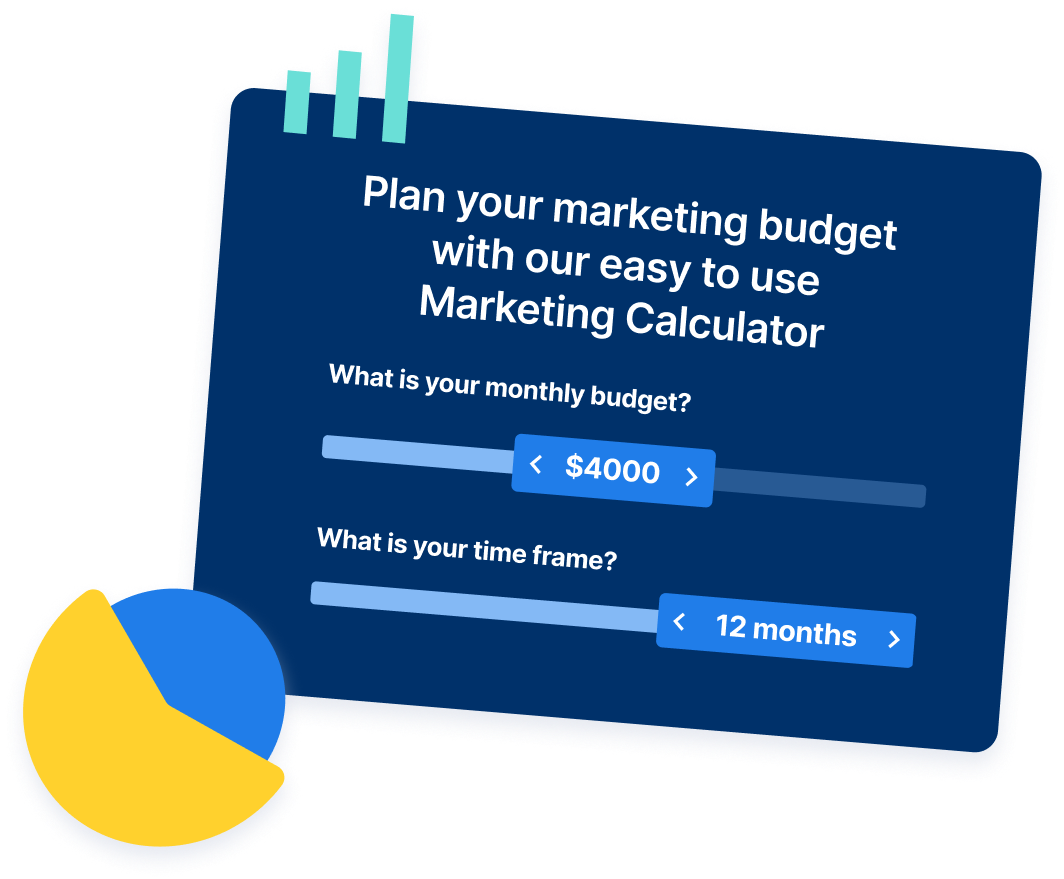
Table of Contents
- Why is ongoing SEO maintenance necessarry?
- SEO isn’t a once-and-done strategy
- Rankings in search results aren't permanent
- Search engine algorithms aren’t static
- Competitors aren’t ignoring SEO maintenance
- How do I maintain my SEO (and rankings)?Your SEO maintenance checklist
- 1. Monitor website performance
- 2. Fix broken and redirected links
- 3. Maintain local listings
- 4. Re-optimize existing content
- 5. Off-page authority management
- Check SEO maintenance off your to-do list today
- FAQs about SEO maintenance
- What is SEO maintenance?
- Why is ongoing SEO maintenance needed?
- How do I maintain my SEO (and rankings)?
- How often should I monitor website performance?
- How frequently should I fix broken or redirected links?
- How often should I maintain local listings?
- How often should I re-optimize existing content?

SEO Success with KOA

Proven Marketing Strategies
Try our free Marketing Calculator
Craft a tailored online marketing strategy! Utilize our free Internet marketing calculator for a custom plan based on your location, reach, timeframe, and budget.
Plan Your Marketing Budget
